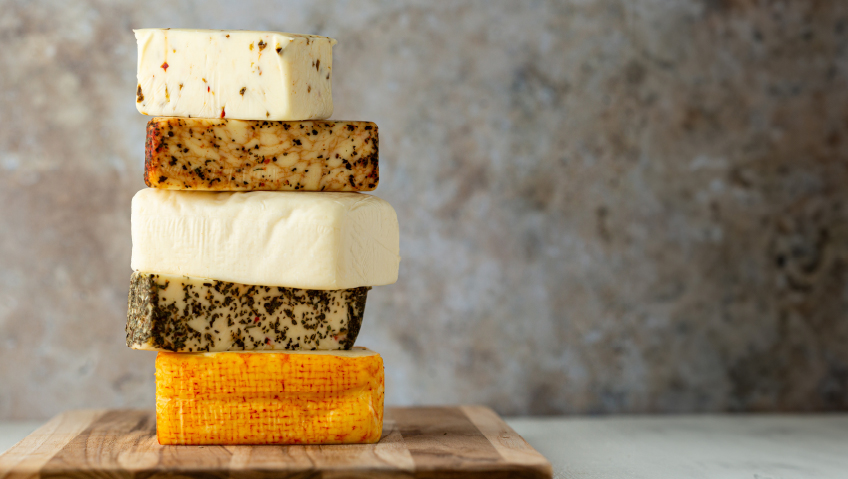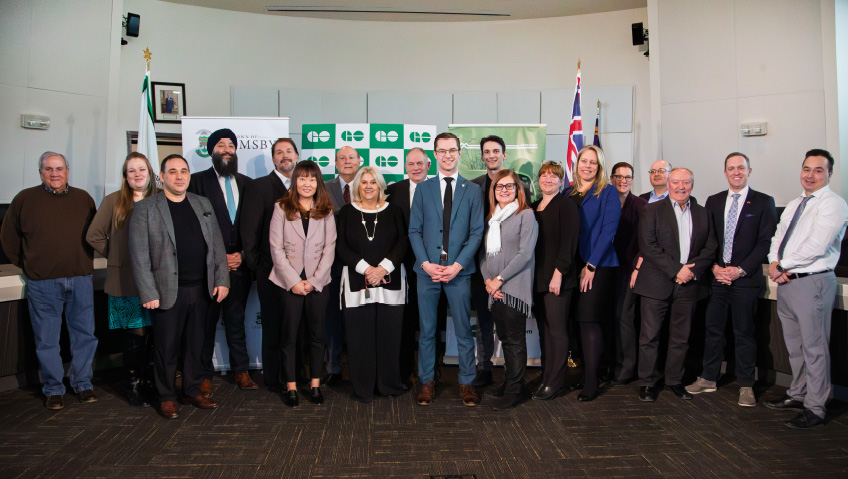Terradyne Armored Vehicles, Inc. designs and builds armored vehicles for law enforcement, border patrol agents, and military medical personnel. At its base in Newmarket, Ontario, the company celebrated its tenth anniversary this year as an independent manufacturer of ultra-tough four-wheeled vehicles. Armored vehicles produced by the ISO-certified company have been put through stringent testing involving bullets and bombs.
“Our market is truly global. We do have a steady customer base within Canada and the United States. I would say we’re the go-to solution for a SWAT [special weapons and tactics] vehicle with Canadian law enforcement,” notes President and Chief Executive Officer Durward Smith proudly.
Terradyne offers a variety of armored vehicles under what it calls the GURKHA line, named after the famously tough soldiers from Nepal who have served in the British Army since the early 1800s. The lineup includes the 16,000-pound Light-Armored Patrol Vehicle (LAPV), the 16,500-pound Multi-Purpose Vehicle (MPV), and the 15,500-pound Rapid-Patrol Vehicle (RPV). They feature six-speed automatic transmissions and V8 turbo diesel engines capable of 330 horsepower.
“Government law enforcement are the main end users in all the categories,” says Smith, of the LAPV, MPV, and RPV.
The company’s vehicles protect more than just police officers. The Multi-Purpose Vehicle, for example, “is not necessarily a front-line fighting vehicle, but it’s an important supply type vehicle. We have, for example, supplied it into Ukraine where the medical forces are using it as a frontline evacuation vehicle. It does an awfully good job of keeping everyone safe,” Smith states.
The company also makes a Civilian Limited Edition Vehicle (CIV) which weighs 13,500 pounds. The CIV closely resembles its GURKHA counterparts but is the only vehicle Terradyne produces that can be purchased by members of the public.
While it stocks and sells spare parts and components made by its global supply base, the company’s vehicles are developed and made in-house. “We design them,” says Smith. “We have a pre-determined option list; however, we are open to special requests within reason. We obviously like to work with the needs of our customers.”
GURKHA vehicles offer military-grade protection against all manner of threats, and to prove their worth, the vehicles are put through ferocious testing. The company hires third-party laboratories to test and inspect if its wares meet National Institute of Justice (NIJ) and North Atlantic Treaty Organization (NATO) standards. The NIJ is the self-described “research, development, and evaluation agency of the U.S. Department of Justice,” while NATO is a coalition of European nations which banded together in a mutually supportive military pact.
Testing can literally involve firing weapons at vehicles or subjecting them to explosions. “To start, you test the material, and once the material has proven it works, they fire at the vehicle looking for what are termed ‘structural weak areas’. We’ve had armor-piercing rounds shot at [our vehicles] with zero penetration,” says Smith. “We’ve done full-vehicle destructive testing, both ballistic and blast. Not only are the test reports available for customers, the test vehicle itself is available at our factory for them to review.”
He notes that Terradyne vehicles recently passed some extreme side-blast tests. These tests were conducted in the United States and involved “a significant amount of TNT equivalent and a large blast,” he says.
“People who are experienced in the industry don’t use the term ‘bulletproof,’” he adds. “It’s about manufacturing the armor to protect against a pre-determined threat level.” GURKHA vehicles are “armored to the highest level within our class of vehicle,” with the company using an “engineered, metallic solution using steel especially formulated for armor plate.”
According to Terradyne specifications, protective armor on the LAPV, MPV, and RPV meets NIJ IV / B7 / STANAG 2 levels. This stands for ‘standardization agreement’ and is a term used for NATO testing.
While strong, Terradyne’s armor plating is relatively light, which makes for improved vehicle dynamics, driving performance, and durability. The vehicles also feature extremely tough glass and run-flat inserts on the wheels. The latter enable the vehicle to keep driving even after a rubber tire has been punctured or shot out, explains Smith.
The Civilian Limited Edition Vehicle has optional armor and an upgraded interior. “We initially were not servicing that market, kind of intentionally staying away from it. However, we were still getting a fairly strong demand signal from the customer side,” he says of the CIV. “So, we came up with a product for them.”
Some people purchase a CIV because they like the “security aspect to it—where it could function as a rolling ‘panic room’ type of application, should that ever be needed. [Other customers] have means and they are maybe a little bored with typical things,” he continues. “They are unique, and they are looking for a unique vehicle.”
The company’s armored vehicles are built upon a Ford Super Duty truck chassis, and all manufacturing is done in Newmarket. Supplier loyalty is a core element of the company’s quality assurance program, and Terradyne maintains ISO 9000 and 14000 certification and extremely high standards. Each workstation in the plant has specific instructions on which operators are trained. There are quality checks at each station along the way, a final inspection, and annual third-party audits. The company only works with suppliers who are equally quality-focused. “We’re loyal to our supply base and they’re loyal back to us,” says Smith.
“We like to know for the sake of our customers that what we’re providing works well and is proven. We take changes in key components very seriously. We tend to stay with suppliers long-term, and we pick vendors that we consider to offer the best product globally,” he adds.
The company has produced up to 100 vehicles in a year, with the capacity to go higher. Completed armored vehicles are either sold directly to clients or through dealers. The U.S. military is not using any Terradyne vehicles at present, although the company is in discussions with Canadian defense officials regarding possible sales.
The company maintains an inventory of tires and spare components and can also make a replacement part if need be. “If someone needs a new door, we can manufacture a door here and send it out to them and it’s going to fit their vehicle.”
Terradyne was founded in 2011 as a subsidiary of Magna International, a huge Canadian auto parts manufacturer, and from the start, Terradyne’s work was centered on armored vehicles. Three years after it was launched, it became an independent outfit.
In terms of new hires, “We definitely want people who are flexible, able to take on different tasks, with a focus on quality. Obviously, we have a lot of welders as well as assemblers and people doing electrical work. So, our range of workers can go from an entry-level assembly type of job up to someone who is pretty advanced and skilled on welding or vehicle electronics,” Smith explains.
The company is registered with the Controlled Goods Program, a Canadian initiative that enables it to export products or data that have “military or national security significance,” according to the Government of Canada website. Under Canadian regulations, GURKHA armored vehicles are also street legal, adds Smith.
To promote itself, Terradyne attends trade shows and industry events around the world for law enforcement groups and places advertisements in specialty trade publications. On occasion, the company will produce prototypes for potential clients. “We will sometimes make demonstrator vehicles available to select customers,” Smith explains. “It’s a big purchase for them, and sometimes, just having the ability to try it out provides the experience and the evidence they need to say, ‘Yeah, this is the product we want.’”
Educating the market about the benefits of GURKHA armored vehicles is the company’s biggest challenge at present, he adds. Over the next few years, “I would say we will be continuing to increase market share. I think customers are becoming more conscious and aware of the quality that they’re buying, not to mention the standing of the company they’re dealing with—the product reputation. And we will also continue to develop and incorporate new technologies and integrate those into our vehicles—increasing the tool kit within the vehicle, if you will.”






